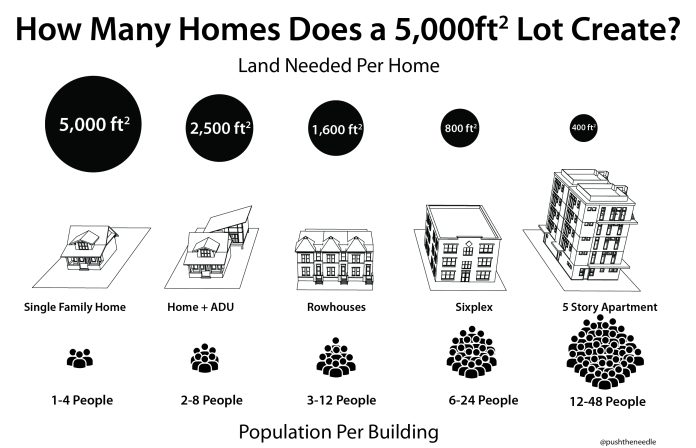Seattle is in a housing crisis, not a land crisis. We have plenty of land in this city. So much land we have the luxury of having more than 165,000 homes dedicated as single structures on a large lot. Single-family zoning takes up 30 square miles in this city, an area larger than Manhattan and nearly the size of Paris. Single-family zoning, a zoning type invented out of thin air to maintain economic and racial segregation, dominates our city’s landscape.
History of single-family zoning
Take a time machine back to when these kit homes showed up from national catalogues and John Wallingford mowed down a forest to build the neighborhood we see today. You will notice one critical thing is missing: zoning. Single-family homes, and triplexes, and sixplexes and small apartments, were legal to build anywhere and everywhere in Seattle when developers like Mr. Wallingford created neighborhoods. Back then, Seattle was short on restrictions, and big on building housing. Queen Anne, which got its start sooner, was able to build a rich neighborhood of diverse housing, housing that is no longer legal to build on many of the sites these buildings sit on today.
A lot has changed since we named entire neighborhoods after the developers that clear cut forests, built houses, and sold them for profit. Today we have something called “single-family zoning”, an artificial suburban-style, restrictive land use invented 50 years after the founding of Seattle. Even the name is a misnomer, since nothing regulates more than one “single-family” from living on each lot. This zoning first showed up in the mid-1920s, ten years after John Wallingford’s death and thirty or so years after he hired those lumberjacks.
As recently as the 1970s, Seattle had far less single-family zoning than we do today. Over the course of a few decades, local advocates, community councils, and city planners grew this restrictive zoning classification aggressively, whether the lot was used for a single-family home or not, to its present 30 square-mile extent. For scale, this is 10 square miles larger than the entire island of Manhattan.
Seattle has the space, but not if single-family zoning dominates
Of its 84 total square miles of land, Seattle currently has just 40 square miles of land where housing is permitted to be built. Of that, only 10 square miles allow apartments and townhomes. Sure, our single-family zones now allow the construction of accessory dwelling units (ADUs), but reform to encourage that option was passed only recently in 2019 and depends upon homeowners wanting build and finance an expensive project on top of their mortgage. To build a good-sized ADU could cost $400,000 and have a breakeven point in 2050 if we started construction tomorrow. We simply do not have the space for people to all live in single-family homes or detached accessory dwellings and must change the path we are on.
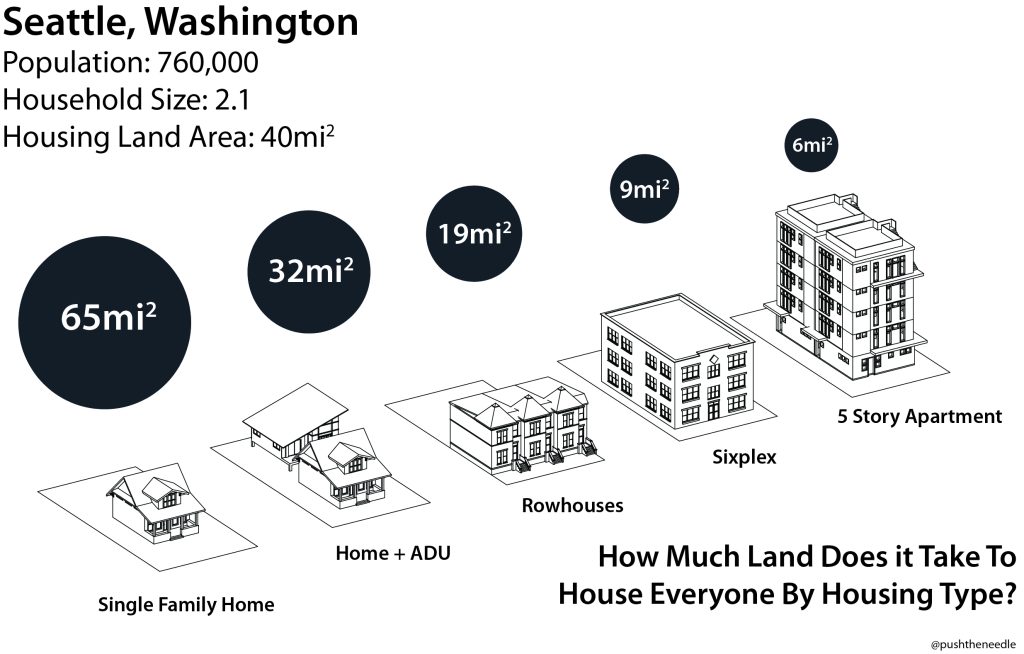
Mark Twain once said, “buy land, they’re not making anymore of it”. Our city’s planning department should have this carved on a gold plaque hung above the entrance and have every member read it as they entire the office — which we will return to shortly. Seattle’s population has outgrown single-family neighborhoods, and is still continuing to grow. Mark is right; Seattle is not getting any more land so we might as well use what we have. Unless we want to keep mowing down those forests just a few miles from our city, we need to look at growing from within. Seattle needs to allow something denser than a single-family home across the entire city.
Since 2010, Seattle has bulldozed 3,000 single-family homes for new larger single-family homes. Had these been sixplexes, nearly a quarter of our population growth this decade could have been housed in these new homes. Hindsight is 20/20, but something tells me this would have relaxed the housing crisis as the city grew.
New construction is expensive, but density creates affordable options
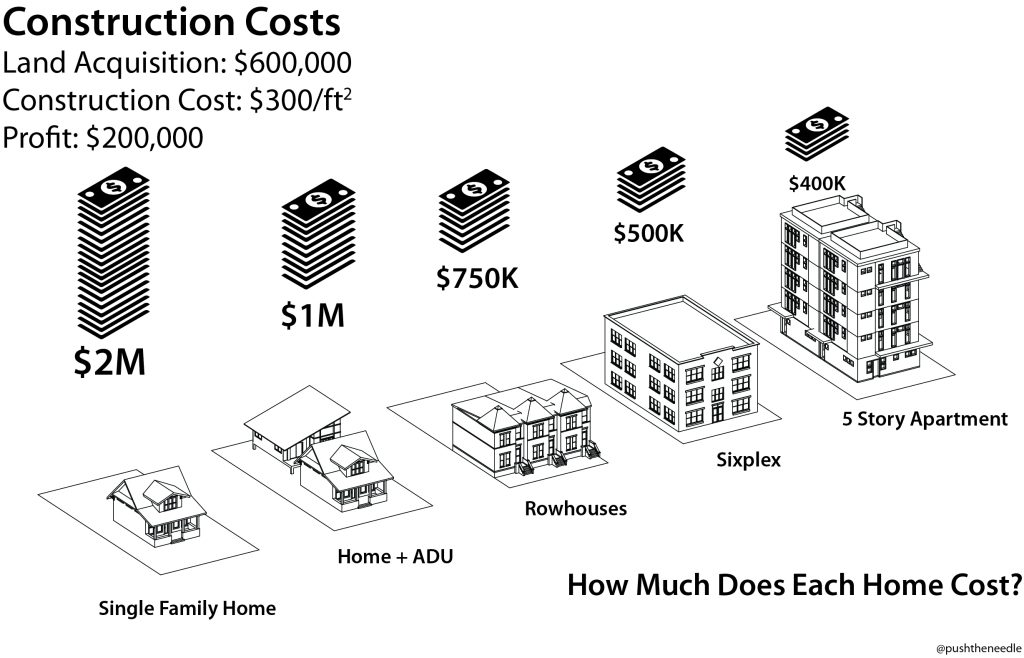
Most people are right when they say new housing is expensive. That’s usually how new things work, they cost more. Buy a brand-new car and you will lose $10,000 the moment you drive it off the lot. At that point, the recouped cost to pay the labor that built it, the innovation to design and plan it, and the salesperson to sell it, has already been awarded. This too is how new housing works. New construction needs to recoup the cost to acquire the land, build the space, and pay their team that designed and built it whether it’s a for-profit project or not. By building more homes on a single lot, this financial need is shared among multiple buyers, which is why new townhomes in Seattle cost less than new single-family homes, which increasingly cost north of $1 million.
By building more new housing, the price of older housing stock doesn’t have to skyrocket each year, jumping nearly 10% in the last year and projected to keep going. Supply slows the growth of real estate in established homes that aren’t in need of recouping labor costs or profits unlike new builds. Let wealthy buyers bid for space in new homes so older homes can remain available and relatively affordable.
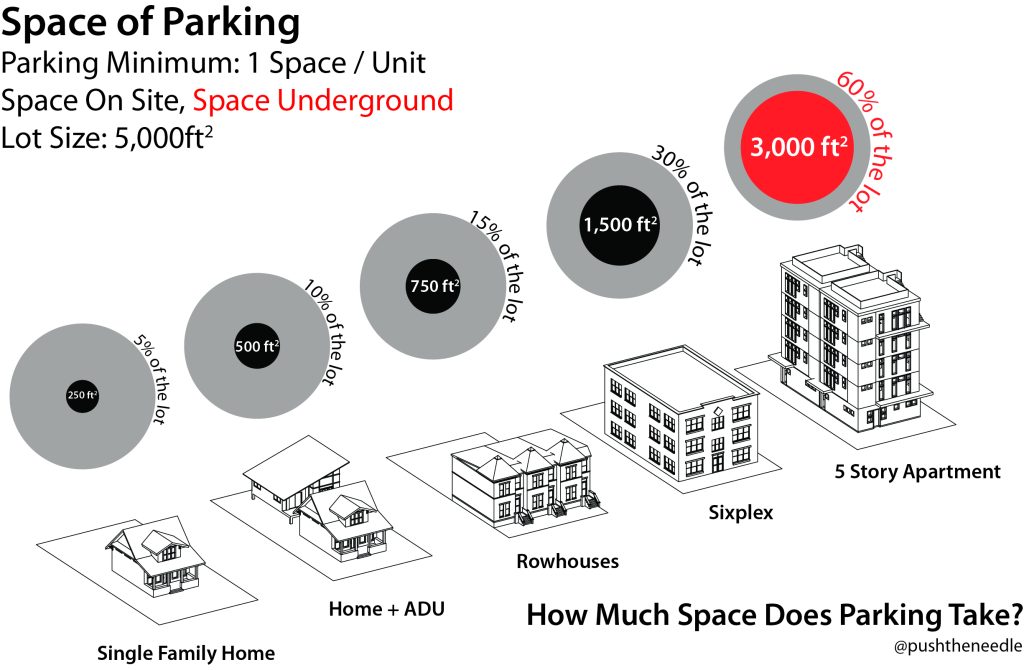
This brings me to parking requirements. Seattle currently requires on-site parking for new homes anywhere outside urban centers and urban villages. Parking requirements do nothing other than make housing more expensive and consume the precious land we cannot afford to waste. You cannot demand on-site parking for an apartment while complaining about how expensive the new homes cost. It’s a contradiction. A single-family home has the cheapest cost of constructing on-site parking because it only needs to provide one space and has plenty of land. As you get into the denser apartments, you cannot supply one spot per home unless you go underground, which is a tipping point that creates a financial anchor that kills projects. Not to mention, many cars parked on Seattle streets today are cars that belong to single-family home dwellers that bought more cars than parking spots.
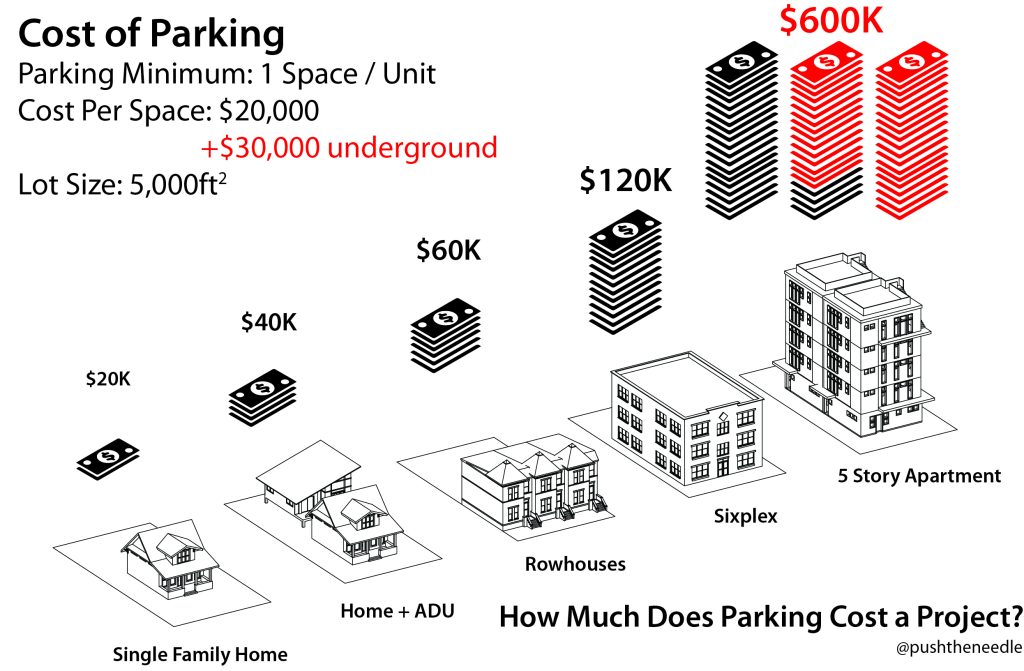
To address affordability, we need to add more density and remove parking minimums. We already waive parking minimums in Downtown, South Lake Union, Ballard, the U District, and the other two dozen urban village neighborhoods citywide. So why bother with them everywhere else? Just get rid of them and let a developer or homeowner decide if it’s worth constructing on their lot.
Working with homeowners
What if we partnered with homeowners to stay in place, let a new sixplex be built, and give them a unit in the new building? This brings down costs for the developer, lets us add density where we desperately need it, lets homeowners stay where they are, and takes the burden of being a developer off the homeowner’s plate. I imagine more homeowners would be glad to participate in a developer partnership like that rather than building a detached unit in their backyard by themselves. Some homeowners in Wallingford are ready to do this if we allow density citywide. Maybe with healthy partnerships like these developers could cease being a boogeyman and scapegoat.
We also need to educate ourselves to the climate impacts of low-density zoning. Seattle is a progressive, left-leaning city, dotted with slogan signs in front yards everywhere. Would more homeowners be willing to develop density in place with a public or private development partner if they knew the scientific impacts single-family zoning does for climate change? And what about the racial and economic segregation associated with single-family zoning? Growing density in single-family neighborhoods touches every subject on those “in this house, we believe” signs.
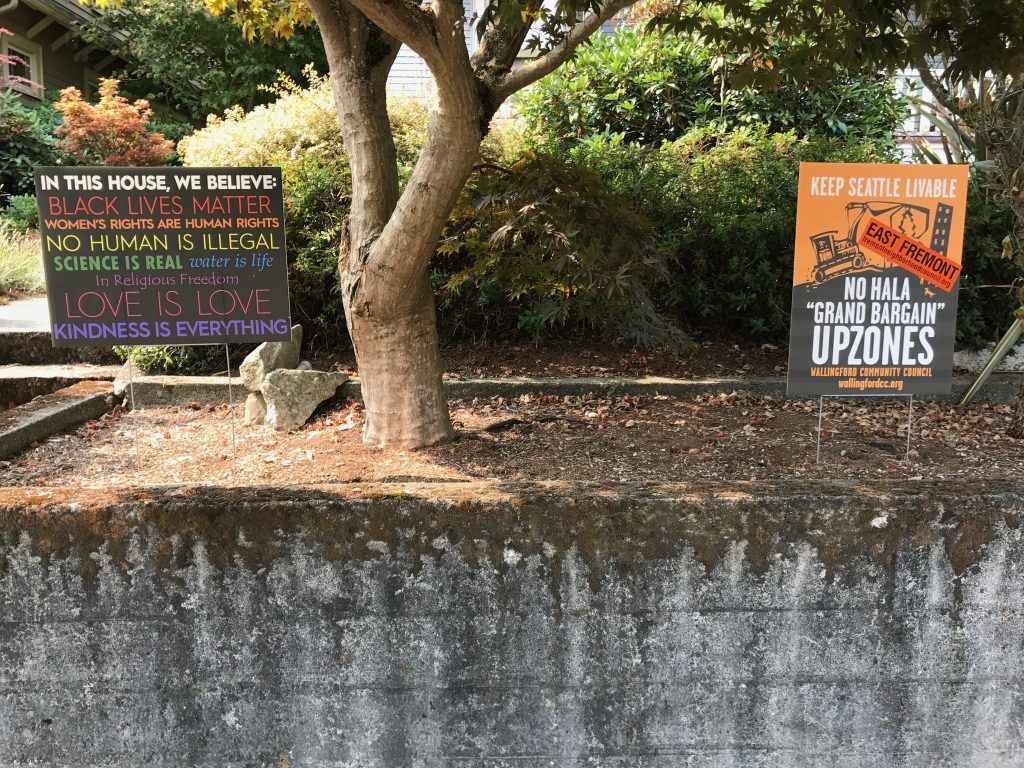
We need more homes, less restriction, more variety, more opportunity
We do not know what Seattle’s population is going to do in 10, 20, or 50 years. All we can do is think about what Mark Twain said, that we need to think about the land we have because Seattle is not getting any more of it. If we let the entire city stock of single-family homes allow a sixplex, we have the potential to become a city of two million people. If we allow five-story apartments everywhere, that grows to four million. None of this is to say we will get to these population figures overnight, nor will this bulldoze our city in an instant. Change takes time, but we need actions in place or we will repeat the mistakes of this last decade’s housing crisis. The 3,000 homes demolished and replaced with new single-family homes this last decade was slow — about 300 homes per year — which is a whopping total of 1.8% of the entire single-family housing stock. What if in the next decade that same change occurs and this time we add 15,000 new homes we didn’t have before? This will relax pressures on older homes and let them remain more affordable.
Let’s finally admit what we are, a city. We need to address the problems of housing and affordability by leveraging the space we have. We cannot stop people from moving to this great city. If we do, it will only exasperate more sprawl and deforestation. We cannot continue the path of pretending we are a low-density suburb disguised as a major city. We need to move forward and add more housing, that’s what John Wallingford did and he got himself elected twice to Seattle City Council.

Ryan DiRaimo
Ryan DiRaimo is a resident of the Aurora Licton-Springs Urban Village and Northwest Design Review Board member. He works in architecture and seeks to leave a positive urban impact on Seattle and the surrounding metro. He advocates for more housing, safer streets, and mass transit infrastructure and hopes to see a city someday that is less reliant on the car.

